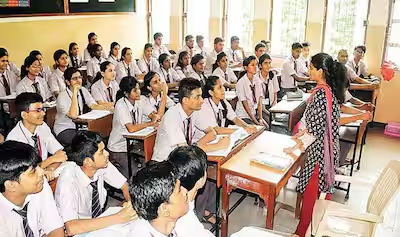Introduction
Is the government genuinely prioritizing quality education, or are we witnessing yet another cycle of political promises without performance? In recent years, state governments across India have made bold claims about reforming the education sector. From infrastructure upgrades to digital classrooms, and curriculum revamps to teacher training, the announcements are plenty—but is the intent translating into tangible impact?
This blog critically examines whether the government is truly serious about improving the quality of education in the state by evaluating key policies, budget allocations, implementation challenges, and ground-level outcomes.
1. Understanding the State of Education: Ground Realities
Before analyzing government efforts, it’s essential to acknowledge the current challenges in the education system:
- Inadequate Infrastructure: Many government schools still lack basic amenities such as functional toilets, clean drinking water, and electricity.
- Teacher Shortage: Thousands of posts for trained teachers remain vacant, leading to skewed student-teacher ratios.
- Dropout Rates: High dropout rates, especially in rural and marginalized communities, continue to plague the system.
- Learning Outcomes: ASER reports consistently highlight that students in many grades cannot read or solve basic arithmetic at their level.
2. Government Policies and Announcements: What’s on Paper
In recent years, various initiatives have been announced:
- Samagra Shiksha Abhiyan (SSA): A flagship scheme aimed at improving school effectiveness in terms of quality and equity.
- NEP 2020 Implementation: The National Education Policy promises sweeping reforms, from foundational literacy to vocational training.
- Digital India Initiatives: Smart classrooms, online assessments, and digital content are being promoted as tools for better learning.
- Mid-Day Meal Scheme Upgrades: Efforts to improve nutrition and school attendance through enhanced mid-day meal quality.
While these policies are commendable on paper, their implementation often raises serious concerns.
3. Budget Allocation vs. Ground-Level Execution
A telling sign of the government’s seriousness is how much it spends on education—and how efficiently those funds are used.
- Allocation Trends: Though education receives a significant share of the state budget, the percentage remains below the UNESCO-recommended 6% of GDP in most cases.
- Delayed Disbursements: Teachers and schools often complain about delays in receiving funds for basic supplies, maintenance, or salaries.
- Corruption and Mismanagement: Audit reports have highlighted multiple instances where funds meant for schools were misused or remained unutilized.
4. Teacher Training and Accountability
No education system can rise above the quality of its teachers. Unfortunately, many states lag behind in:
- Continuous Professional Development (CPD): Periodic training for teachers is either outdated or sporadic.
- Merit-Based Recruitment: Politicization and favoritism in teacher appointments dilute quality.
- Performance Evaluation: There is often no robust mechanism to evaluate teacher performance linked to student outcomes.
5. Technology in Classrooms: Revolution or Mere Optics?
While governments boast about introducing tablets and smart boards, the success of EdTech hinges on:
- Digital Infrastructure: Internet connectivity is poor or non-existent in many government schools, especially in remote areas.
- Teacher Training: Teachers are not adequately trained to use digital tools effectively.
- Student Access: Not all students have access to digital devices at home, deepening the digital divide.
6. Public-Private Partnerships and NGO Involvement
To bridge the gaps, many governments have tied up with NGOs and private players:
- Bridge Courses & Remedial Programs: Some NGOs run bridge programs to bring lagging students up to speed.
- Monitoring & Evaluation Tools: Tech-based tracking systems are used in some districts to monitor attendance and performance.
- CSR Initiatives: Corporate Social Responsibility funding is increasingly supporting government school projects.
However, without a cohesive policy and oversight, these efforts often operate in silos and lack scalability.
7. What the Data Says: Measuring Real Impact
Key metrics to assess government seriousness include:
- Learning Outcomes: According to ASER and NAS surveys, marginal improvements are visible, but the pace is slow.
- Enrollment vs. Attendance: Enrollment has increased, but attendance continues to be inconsistent.
- Infrastructure Audits: Despite budget allocations, many schools fail to meet Right to Education Act norms.
Conclusion: Intent Without Impact?
While the government certainly appears serious—through policies, speeches, and budget announcements—the real measure of its commitment lies in sustained implementation, transparency, and accountability. The gap between intent and impact remains wide.
If the government is truly serious about improving the quality of education, it must focus on:
- Strengthening grassroots implementation.
- Making teacher training and recruitment merit-based.
- Ensuring timely fund disbursement.
- Engaging communities and students in policymaking.


